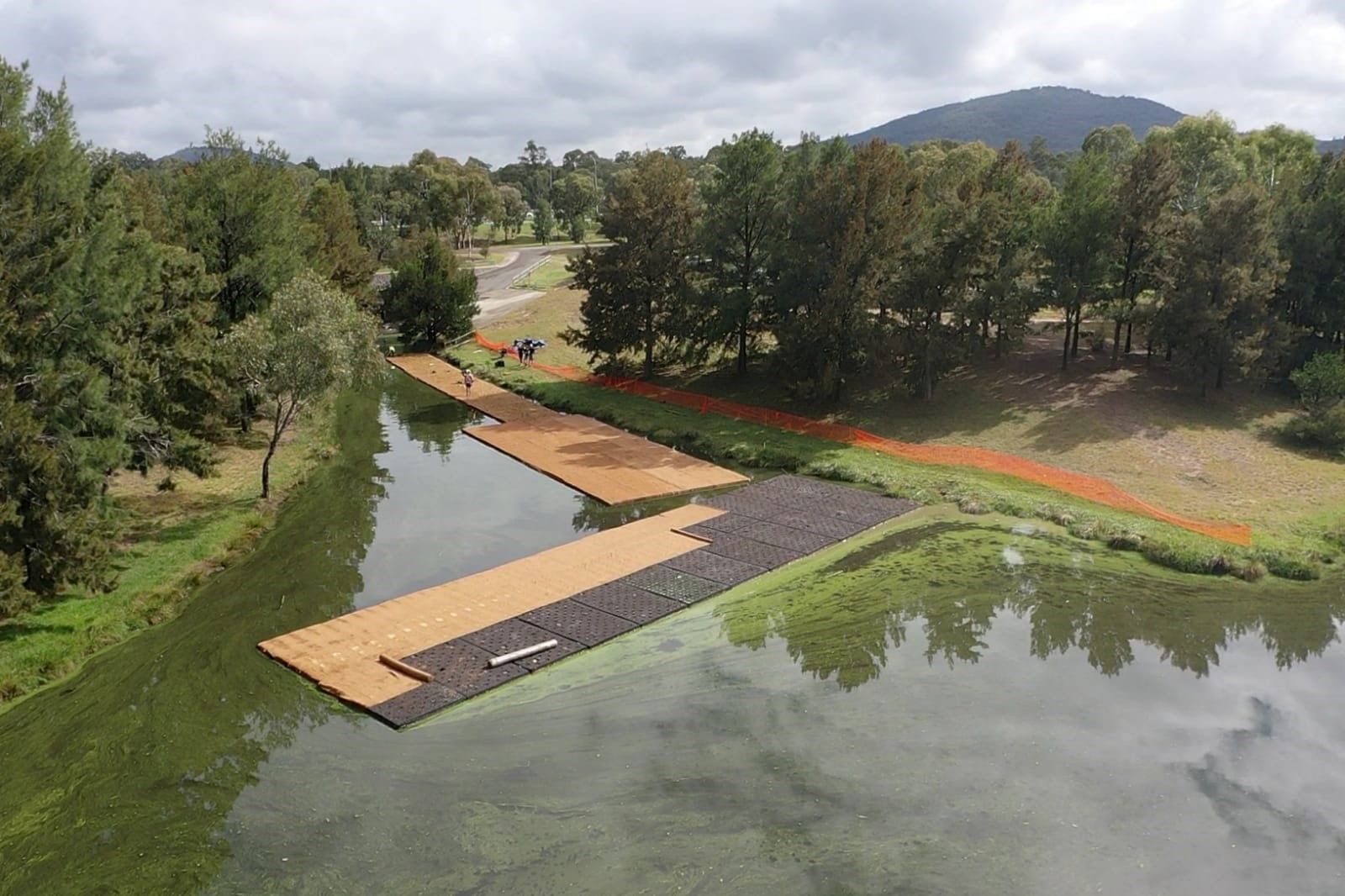For years, Lake Tuggeranong in Canberra has been plagued by bouts of algal blooms. Most recently, swimmers were warned to avoid swimming in the popular lake due to an extreme alert for blue-green algae.
Algal blooms are caused by excessive nutrients, which are introduced to water bodies through stormwater pollution. High levels of blue-green algae starve a water body of oxygen, giving rise to an anoxic environment and killing off most of the organisms that live and maintain that aquatic habitat.
To tackle the recurring problem of algae blooms in Lake Tuggeranong the ACT Government has decided to implement a stormwater treatment train approach that incorporates the existing Gross Pollutant Trap (GPT) and floating treatment wetlands. The existing GPT capture large volumes of organic matter and manmade litter attributed from the open channels entering the GPT prior to Lake Tuggeranong. The Floating Wetlands are designed to absorb excess nutrient and improving water quality.
SPEL is delighted to share this WIN News coverage of the FTWs we installed at Tuggeranong:
How Floating Treatment Wetlands Work
FTWs are basically artificial islands embedded with native plant species. Once the plants mature, their roots grow out of the bottom of the island and extend out into the water column. They effectively absorb the nutrients that the plant needs from the water, reducing the amount of excess nutrients present in the water body.
More than that, once their embedded plants become more mature, the FTWs also serve as additional habitat to other animals in and around the lake such as fish, birds, and insects. The floating wetlands also lend a pleasing aesthetic to the water body they sit atop of. They can be retrofitted in detention ponds and canals to provide social amenity while serving their main purpose of improving water quality.
Learn more about FTWs by visiting our Floating Treatment Wetlands page.



